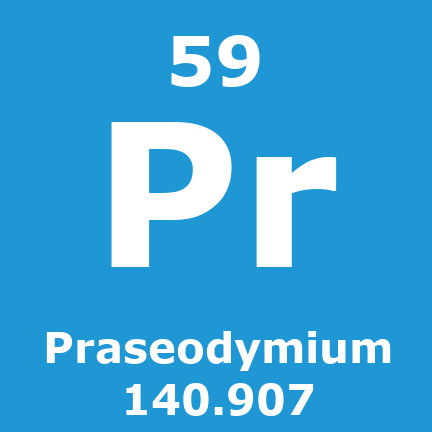Praseodymium (Substance) AKA Pr

Praseodymium
1885 AD
AKA Pr
Praseodymium is the third member of the lanthanide series. In the periodic table, it appears between the lanthanides cerium to its left and neodymium to its right, and above the actinide protactinium. It is a ductile metal with a hardness comparable to that of silver.
Its 59 electrons are arranged in the configuration [Xe]4f36s2; theoretically, all five outer electrons can act as valence electrons, but the use of all five requires extreme conditions and normally, praseodymium only gives up three or sometimes four electrons in its compounds.
Like most other metals in the lanthanide series, praseodymium usually only uses three electrons as valence electrons, as afterwards the remaining 4f electrons are too strongly bound: this is because the 4f orbitals penetrate the most through the inert xenon core of electrons to the nucleus, followed by 5d and 6s, and this increases with higher ionic charge.
Praseodymium nevertheless can continue losing a fourth and even occasionally a fifth valence electron because it comes very early in the lanthanide series, where the nuclear charge is still low enough and the 4f subshell energy high enough to allow the removal of further valence electrons.[9] Thus, similarly to the other early trivalent lanthanides, praseodymium has a double hexagonal close-packed crystal structure at room temperature. At about 560 °C, it transitions to a face-centered cubic structure, and a body-centered cubic structure appears shortly before the melting point of 935 °C.[10]
Praseodymium, like most lanthanides (except lanthanum, ytterbium, and lutetium, which have no unpaired 4f electrons), is paramagnetic at room temperature. Unlike some other rare-earth metals, which show antiferromagnetic or ferromagnetic ordering at low temperatures, praseodymium is paramagnetic at all temperatures above 1 K.








